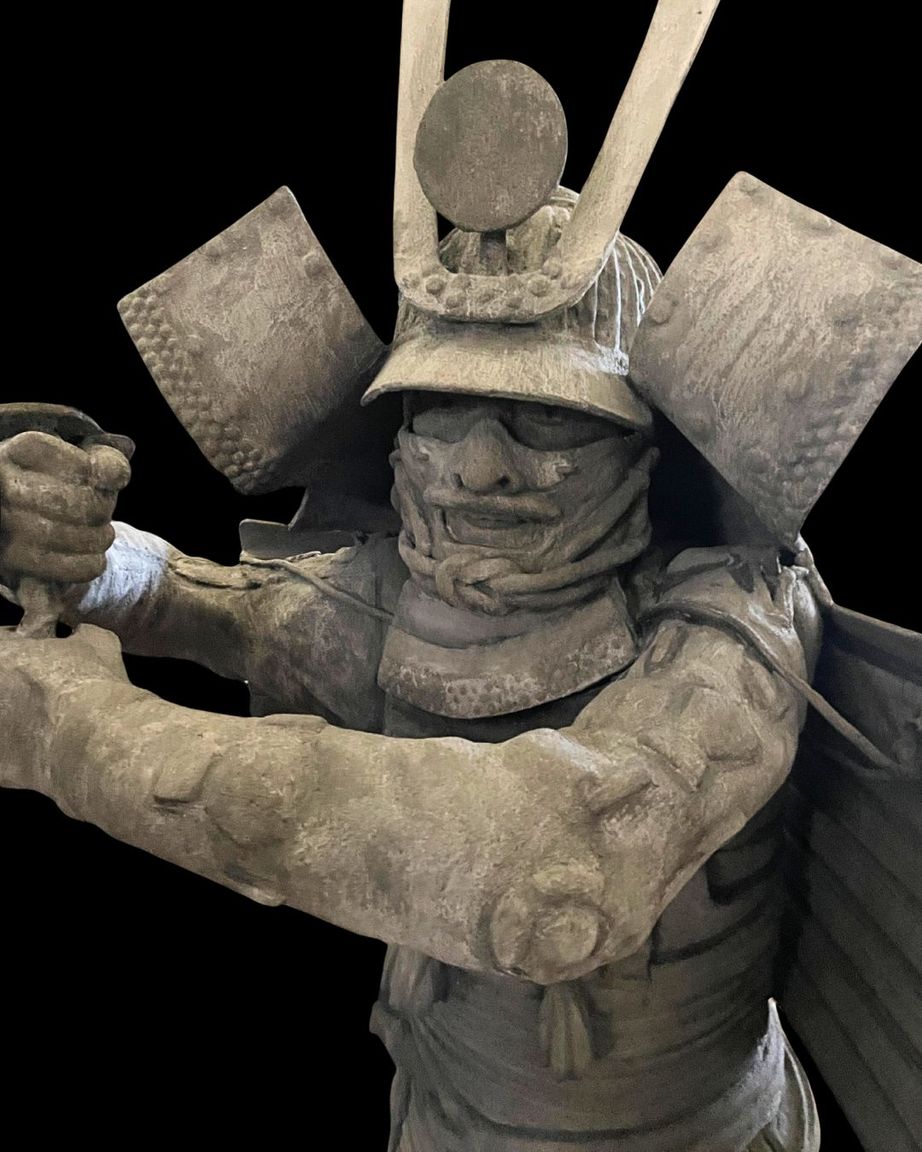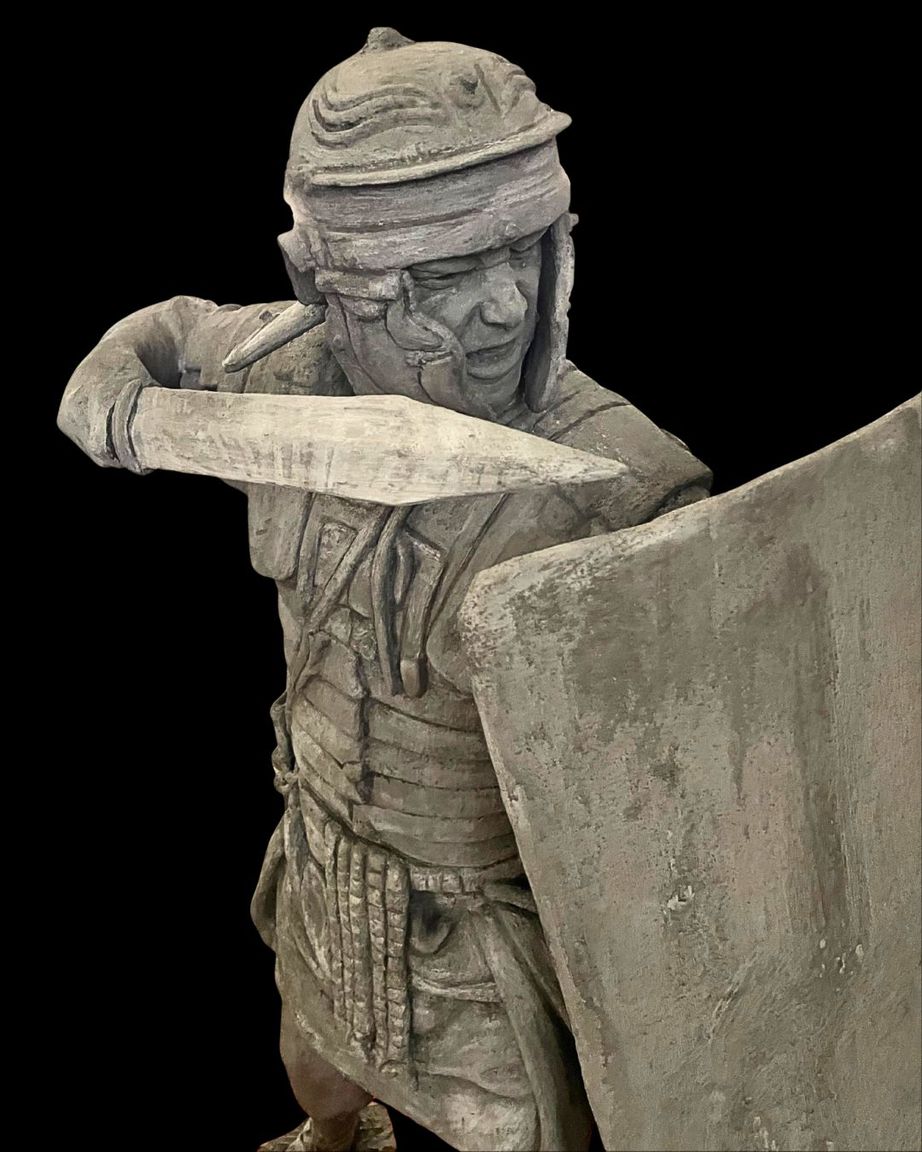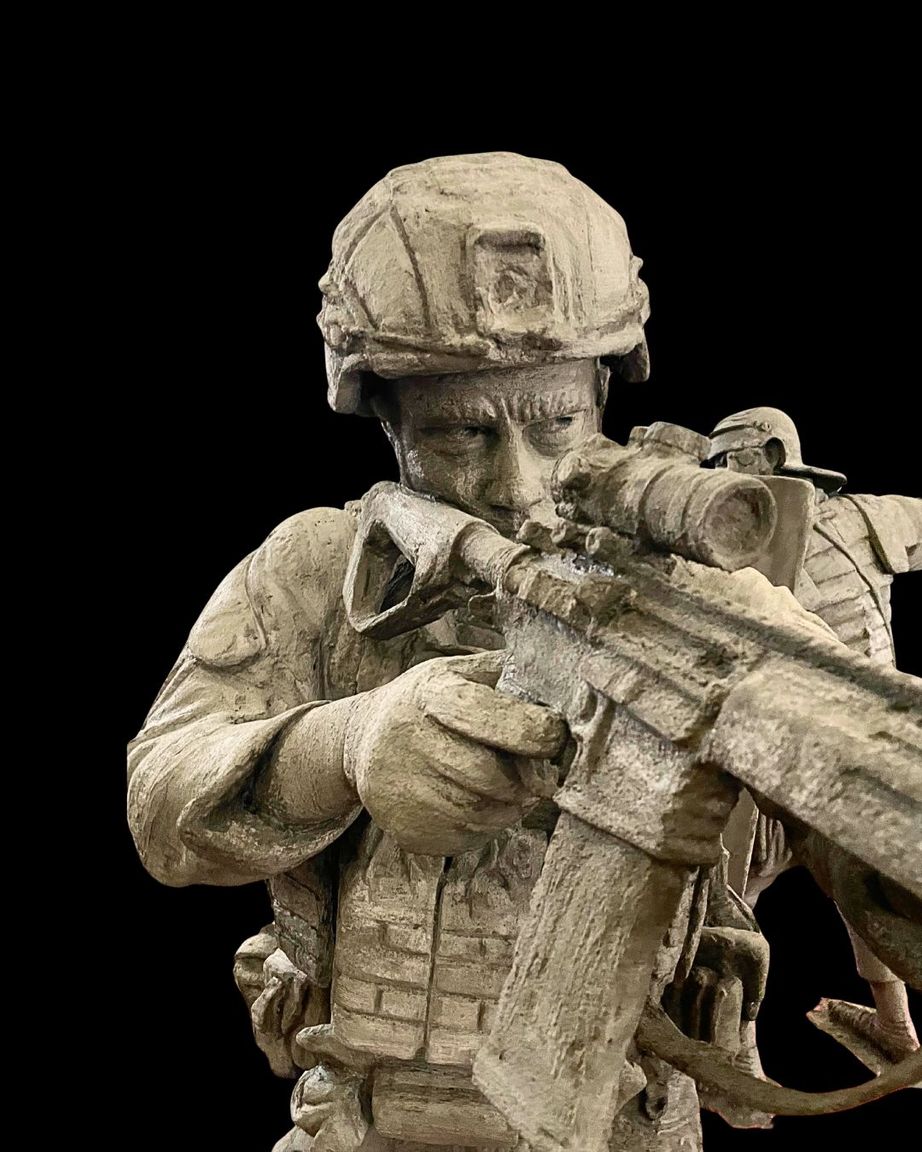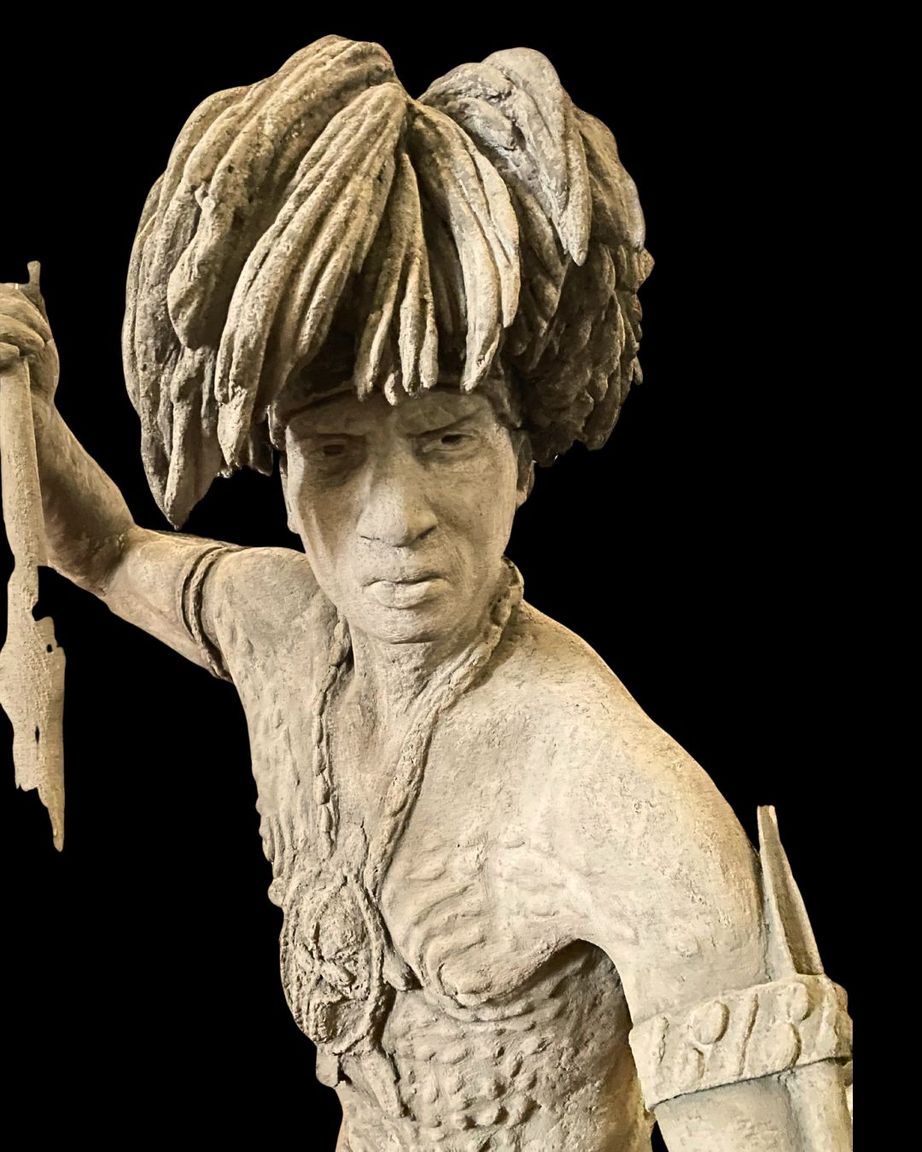In all societies, it is taboo to kill. But this does not apply to warriors. Follow four warriors across time and space - before, during, and after the battle.
The tour takes place in the exhibition 'Warrior'. Here we encounter a Japanese samurai, a Roman legionary, a ritual warrior from Papua New Guinea, and a Danish soldier. We take a closer look at what it does to a person to become a warrior. For war transforms. Warriors can be harmed in body and mind, but also feel empowered by experiencing success on the battlefield.
Practical information
Duration
1 hour
Number
Maximum 20 people.
Price
- Within normal opening hours: DKK 1,100 plus admission
- Outside normal opening hours: DKK 1,650 plus admission
How to book
Send an e-mail to [email protected]
Meeting place
At the ticket office, Tøjhusgade 3, 1220 Copenhagen K.
NOTE: Tours must be booked with a min. 7 days notice.
1.
Samurai – born as warriors
Dressed in protective armor, the samurai lifts his sharp sword, the Katana, against his opponent. Since childhood, he has been trained to become a warrior – first with wooden swords and later with sharp blades. Honor means everything. If the samurai performs well in battle, it brings prestige for generations. If he fails, it brings shame upon the family, and the samurai must cut open his stomach and commit seppuku - ritual suicide - to restore honor. In the exhibition 'Warrior', you meet a samurai from around the year 1600.

2.

The Roman legionary – fighting for the emperor
Becoming a Roman legionary requires strict discipline and rigorous physical training. It involves training from dawn till dusk, including marching 30 km with a 50 kg heavy pack. When the warrior training is complete, there is one last important thing the legionaries must do to join the ranks of the warriors: To swear allegiance to the emperor and, if necessary, fight to the death for the Roman Empire. In the exhibition 'Warrior', you will meet a Roman legionary from around the year 100.


A special bond
Warriors who have fought together share extreme experiences that may be difficult for others to understand. This creates a strong community that lives on long after the battle, when the warrior has returned to everyday life.
3.
Danish soldier – a voluntary choice
The Danish soldier has chosen to go to war voluntarily. The equipment is top-notch with a helmet, goggles, and a protective vest with metal plates on the back and chest, which protect against flying projectiles and fragments. With the M/10 rifle in hand and the company badge on the uniform, the soldier is ready to test their rigorous warrior training – now the battle will take place. In the exhibition 'Warrior', you meet a contemporary Danish soldier.

4.

Sepik warrior – possessed by a warrior spirit
From childhood, the warrior spirit is cultivated in the future Sepik warrior. In the Sepik region of New Guinea, war is ritualistic – it's not about politics or conquering land but rather about symbolic power. Before battle, the warrior spirits must be invoked to possess the Sepik warrior, who must undergo rituals to be able to kill. After the fight, the warrior is beaten with branches by the village women to drive the warrior spirit out again. In the exhibition 'Warrior', you will meet a Sepik warrior from the 1920s.

Image gallery

1 / 5
Creative killers
The human body is vulnerable, and ingenuity can be great when it comes to inflicting harm on it. Therefore, the warrior protects their body with shields, armor, and protective vests.

2 / 5
Protected by the god of war
Danish soldiers wear a protective vest with plates on the back and stomach that protect against projectiles and fragments. The American manufacturer of the vest has named its company after the god of war Tyr in Norse mythology

3 / 5
Stop swords. Displaying status
The Japanese samurai wears armor that protects against swords, arrows, spears, and over time also gunfire. The armor also indicates the samurai's status.

4 / 5
Faceless protection
The Roman legionary wears a face visor along with his cavalry helmet. The visor protects and obscures the individual's identity.

5 / 5
Protection of the spirits
Another form of protection comes from spirits. The Sepik warrior is often 'possessed' by a spirit leading up to the battle, which provides him with strength, courage, and protection. This ornament is a mask that gives a face to one of these spirits.
